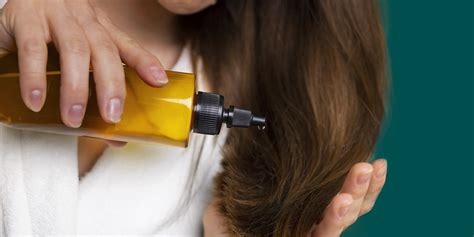Introduction
Hair, an integral part of our physical appearance, plays a crucial role in boosting confidence and enhancing overall well-being. Healthy, lustrous hair is not just visually appealing but also a reflection of good nutritional habits and overall health. While genetics play a significant role in determining hair quality, proper hair care practices, including the use of nourishing oils, can make a world of difference. In this comprehensive guide, we delve into the world of oils for hair, exploring their benefits, types, and effective application methods.

The Benefits of Oils for Hair
Hair oils are packed with a wealth of nutrients, including vitamins, minerals, and fatty acids, that nourish hair follicles, promote growth, and enhance overall hair health. Studies have shown that regular oil treatments can:
- Strengthen hair shafts, reducing breakage and split ends
- Hydrate dry, brittle hair, restoring softness and shine
- Tame frizz and flyaways, leaving hair smooth and manageable
- Soothe scalp irritation and prevent dandruff
- Promote blood circulation to hair follicles, stimulating growth
- Protect hair from environmental stressors, including UV damage and pollution
Types of Oils for Hair
The wide range of oils available for hair care can be overwhelming. Here’s a breakdown of some of the most popular and effective options:
- Argan oil: Rich in vitamin E and fatty acids, argan oil is known for its moisturizing and nourishing properties. It can help strengthen hair, reduce breakage, and add shine.
- Coconut oil: A natural moisturizer, coconut oil penetrates deep into the hair shaft, providing hydration and protection from damage. It also contains lauric acid, which has antibacterial and antifungal properties.
- Jojoba oil: Similar to the natural oils produced by the scalp, jojoba oil helps balance scalp sebum, hydrate hair, and prevent dryness. It’s also known for its anti-inflammatory properties.
- Olive oil: A Mediterranean staple, olive oil is rich in vitamins, antioxidants, and fatty acids. It can help strengthen hair, improve elasticity, and reduce breakage.
- Avocado oil: Packed with vitamins A, D, and E, avocado oil nourishes and strengthens hair. It can also help protect against damage caused by free radicals.
Choosing the Right Oil for Your Hair Type
Selecting the right oil for your hair type is essential for maximizing its benefits. Fine hair benefits from lightweight oils like argan oil and jojoba oil, which can add moisture without weighing it down. Medium to thick hair can tolerate heavier oils like coconut oil and olive oil, which provide deep hydration and nourishment. For dry and damaged hair, choosing oils rich in vitamins and antioxidants, such as avocado oil and argan oil, is recommended.
How to Apply Hair Oils Effectively
Applying hair oils correctly ensures optimal absorption and benefits. Here’s a step-by-step guide:
- Warm the oil: Slightly warm the oil before applying it to enhance its absorption. Microwave it for a few seconds or place it in a warm water bath.
- Start with the ends: Apply the oil to the ends of your hair first, as they tend to be the driest and most prone to damage. Avoid applying oil to the roots, as it can weigh hair down and make it greasy.
- Massage the scalp: Gently massage the oil into your scalp with your fingertips to stimulate blood circulation and promote absorption. Be gentle and avoid scratching the scalp.
- Cover your hair: After massaging, cover your hair with a shower cap or a warm towel to increase the oil’s penetration. Leave it on for at least 30 minutes or overnight.
- Rinse thoroughly: Rinse your hair thoroughly with lukewarm water to remove any excess oil. Use a clarifying shampoo if necessary.
Tips and Tricks for Optimal Hair Oil Use
- Frequency: Apply hair oils 1-2 times per week for best results. Overusing oils can weigh hair down and lead to buildup.
- Consistency: Choose oils based on your hair type and needs. Fine hair requires lighter oils, while thick hair can benefit from heavier oils.
- Experimentation: Try different oils to find the best fit for your hair. Some oils may work better for you than others.
- DIY hair masks: Create your own hair masks by combining different oils with other nourishing ingredients like honey or yogurt.
- Sun protection: Some oils, like argan oil and olive oil, offer natural sun protection. Use them as a leave-in conditioner to protect hair from UV damage.
Table 1: Benefits of Different Hair Oils
| Oil | Key Benefits |
|---|---|
| Argan oil | Moisturizes, strengthens, and adds shine |
| Coconut oil | Hydrates, protects from damage, and has antibacterial properties |
| Jojoba oil | Balances scalp sebum, hydrates, and prevents dryness |
| Olive oil | Strengthens hair, improves elasticity, and reduces breakage |
| Avocado oil | Nourishes, strengthens, and protects against free radical damage |
Table 2: Hair Oil Selection Guide Based on Hair Type
| Hair Type | Recommended Oils |
|---|---|
| Fine hair | Argan oil, jojoba oil |
| Medium to thick hair | Coconut oil, olive oil |
| Dry and damaged hair | Avocado oil, argan oil |
Table 3: How to Apply Hair Oils
| Step | Instructions |
|---|---|
| 1 | Warm the oil slightly. |
| 2 | Start applying at the ends of your hair. |
| 3 | Massage the oil into your scalp. |
| 4 | Cover your hair with a shower cap or warm towel. |
| 5 | Leave it on for at least 30 minutes or overnight. |
| 6 | Rinse thoroughly with lukewarm water. |
Table 4: Tips for Optimal Hair Oil Use
| Tip | Description |
|---|---|
| Frequency | Apply 1-2 times per week. |
| Consistency | Choose oils based on your hair type. |
| Experimentation | Try different oils to find the best fit. |
| DIY hair masks | Create your own masks with oils and other ingredients. |
